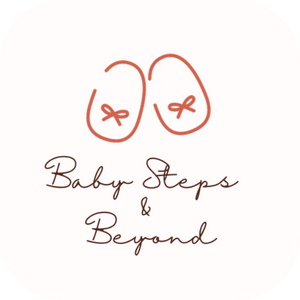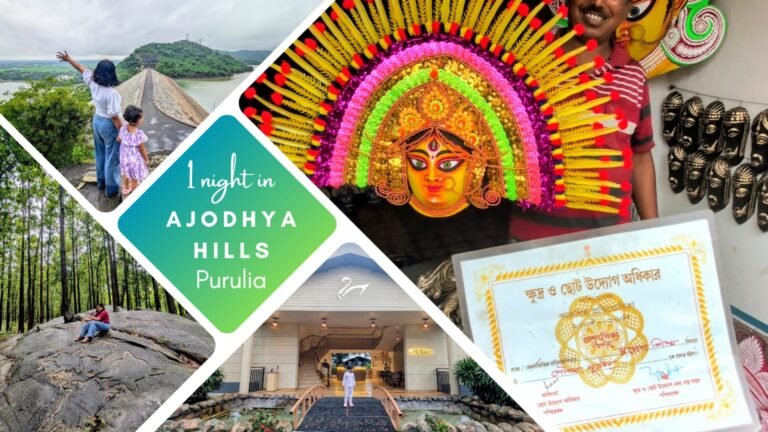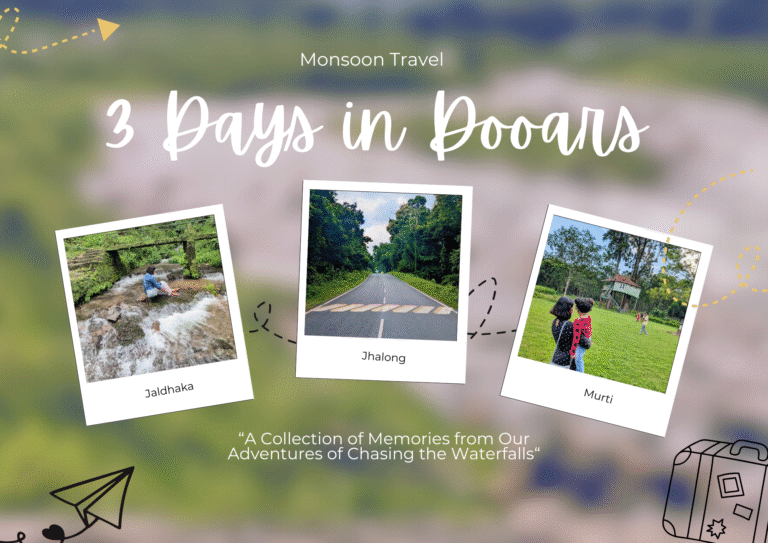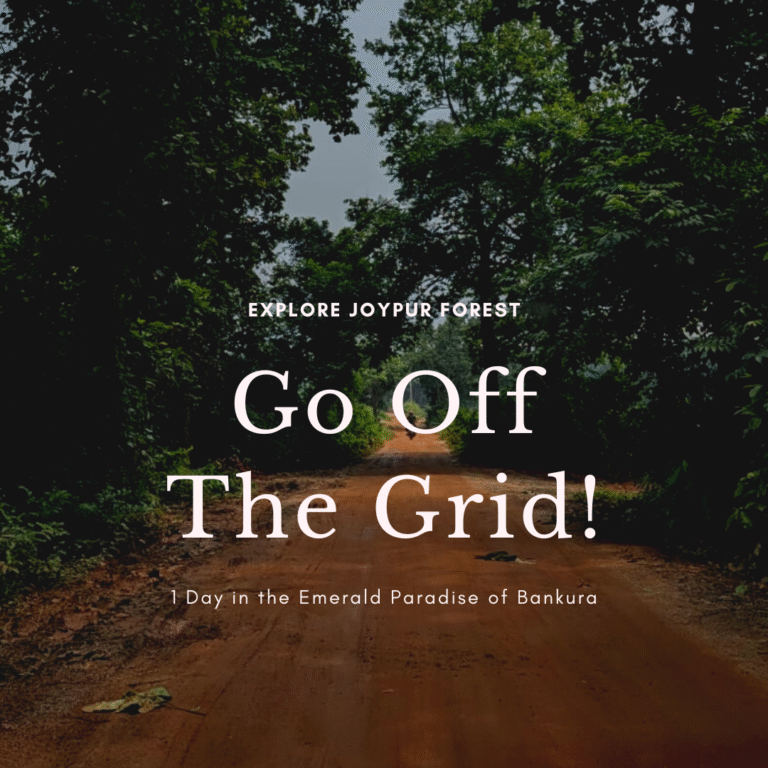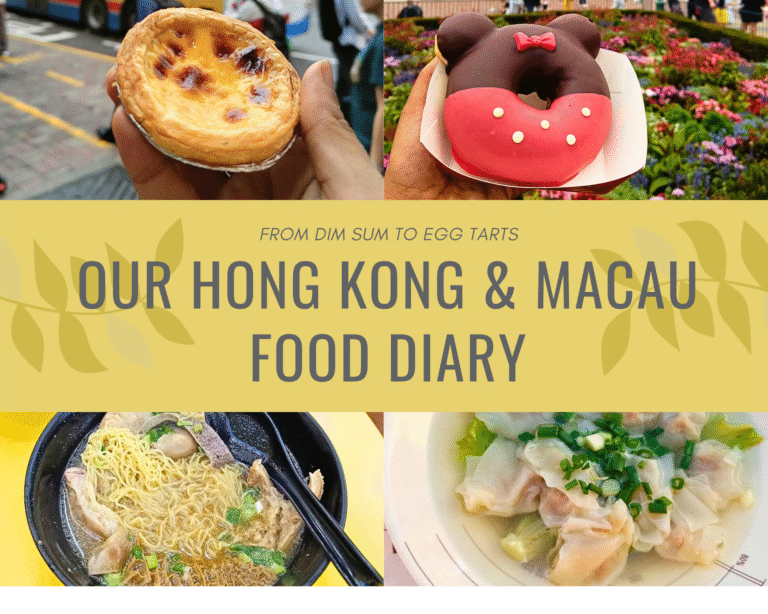Vienna isn’t just a city—it’s a time machine wrapped in elegance, sprinkled with the scent of fresh pastries, and set to a symphony of waltzing violins.
One moment you’re staring up at the grandeur of an imperial palace, the next you’re sinking your teeth into the crispiest schnitzel of your life. With just two days to conquer this Austrian masterpiece, you’ll need a plan that balances indulgence, adventure, and a touch of old-world charm.
But first, head over to our blog to explore Central Europe in 14 Days, with expert-crafted itineraries, insider recommendations, and secret travel hacks ready to go!
Now, that you’re in Vienna, it’s time to get on a whirlwind adventure… Ready? Let’s go!
Day 1: Arrive, Eat, and Get High (On Views, Of Course!)
2:30 PM: Arrive at Vienna Hauptbahnhof and Initiate the Snack Attack
Your adventure begins at Vienna’s central station, Hauptbahnhof. Opened in 2014, this modern transport hub connects Austria to the rest of Europe and replaced several older terminals. Despite its sleek design, it sits on historically significant grounds that once housed a major railway station dating back to the 19th century.
But before anything else—food. Your first taste of Austria should be a hearty from Leberkas Pepi. At just €3.40, this meatloaf-in-a-bun situation will fuel your upcoming escapades. Despite its name, Leberkäse contains neither liver nor cheese—it’s a baked meatloaf made from finely ground pork, beef, and bacon. Traditionally served in a crispy Semmel (Austrian bread roll) with mustard, it’s a go-to snack for Austrians, whether for breakfast, lunch, or a quick bite on the move!

3:00 PM: Hotel Check-In
Head over to your hotel. We selected an accommodation close to the station. Boutique Hotel Kolbeck, was just a short 6-minute walk from the station. Drop your bags, freshen up, and prepare to explore.
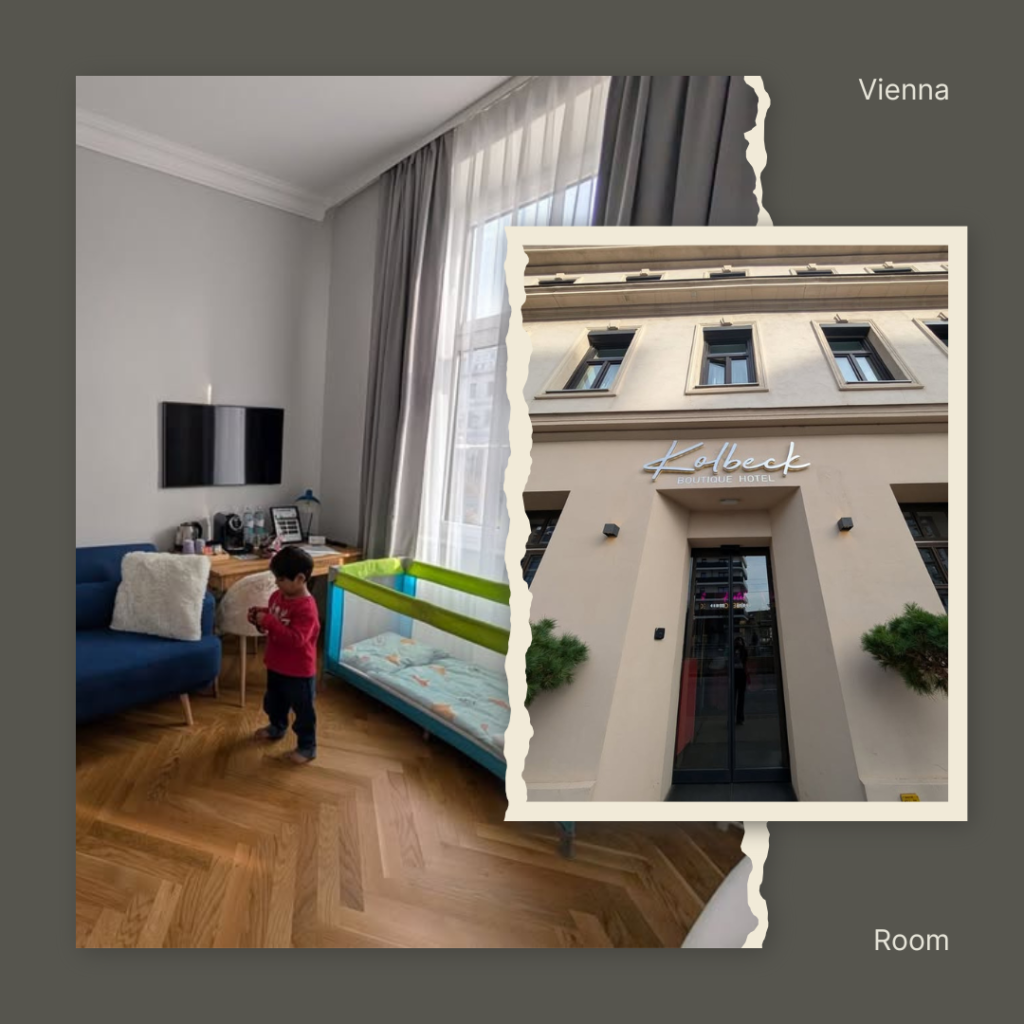
5:30 PM: Bite into Wiener Schnitzel
A quick bite into a Weiner Schnitzel is a must. Expect a massive, golden-brown schnitzel that takes over your plate—and possibly your soul. The best part? This iconic dish is easily available in almost every restaurant. This thin, breaded, and fried veal cutlet dates back to the 19th century and is said to have been inspired by a similar dish from Milan. In Austria, only schnitzel made from veal can be called “Wiener Schnitzel,” while pork versions are labeled differently.
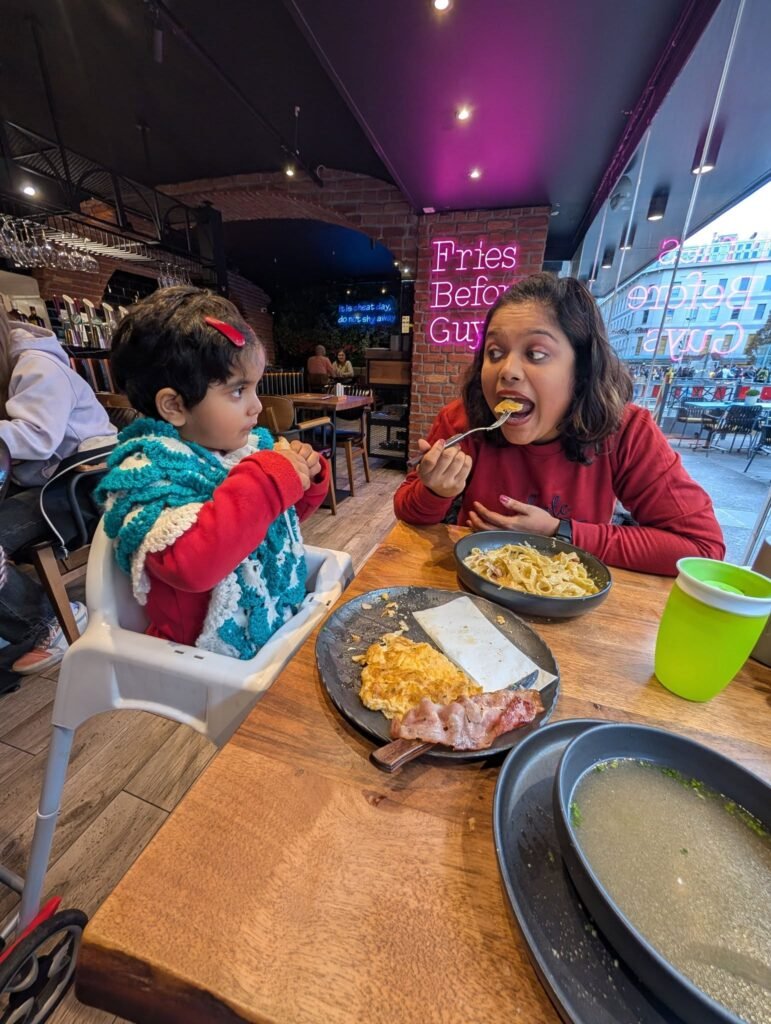
6:30 PM: Off to Prater Park for Nostalgia and Thrills
Once an imperial hunting ground, Prater was opened to the public in 1766 by Emperor Joseph II, transforming it into Vienna’s most famous, and the world’s first amusement park. It’s home to the Wiener Riesenrad, the world’s oldest operating Ferris wheel, which has stood tall since 1897 and even survived World War II bombings. Ride it for stunning aerial views of the city (€14 for adults, €6.50 for kids). It also houses the world’s first carousel as well!
🎡 Budget tip: Prater is free to enter! You only pay for individual rides, so you can explore the funfair without spending a dime.
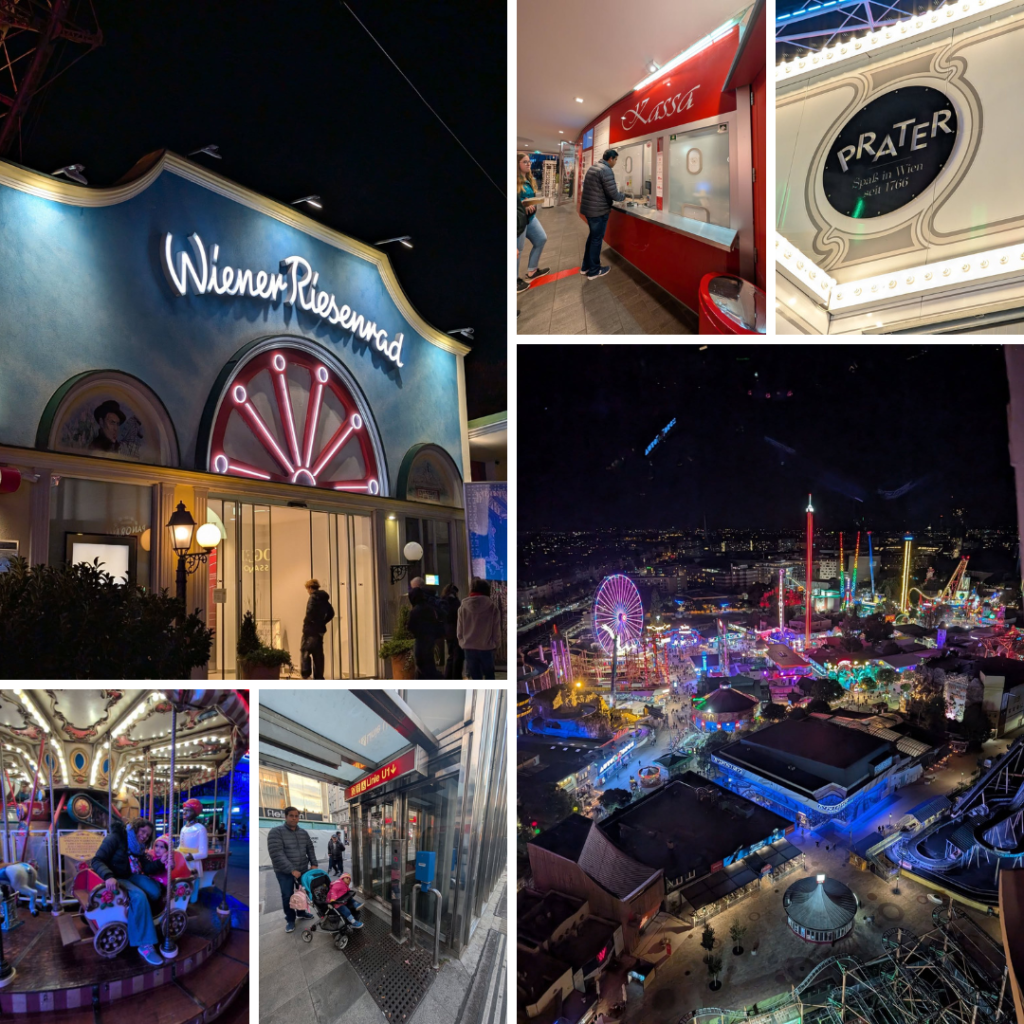
8:00 PM: Dinner at the Rollercoaster Restaurant
At Rollercoaster Restaurant, your food is delivered via a twisting, looping rail system. It’s a bit gimmicky, but a fun experience (€20 per person). Alternatively, head to Schweizerhaus for a more traditional Austrian beer garden vibe.
🎢 Luxury option: Go fancy with a meal at Steirereck, a Michelin-starred restaurant known for its modern takes on Austrian classics.
And that’s a wrap on day one! Head back to your hotel and rest up—tomorrow is a packed day.
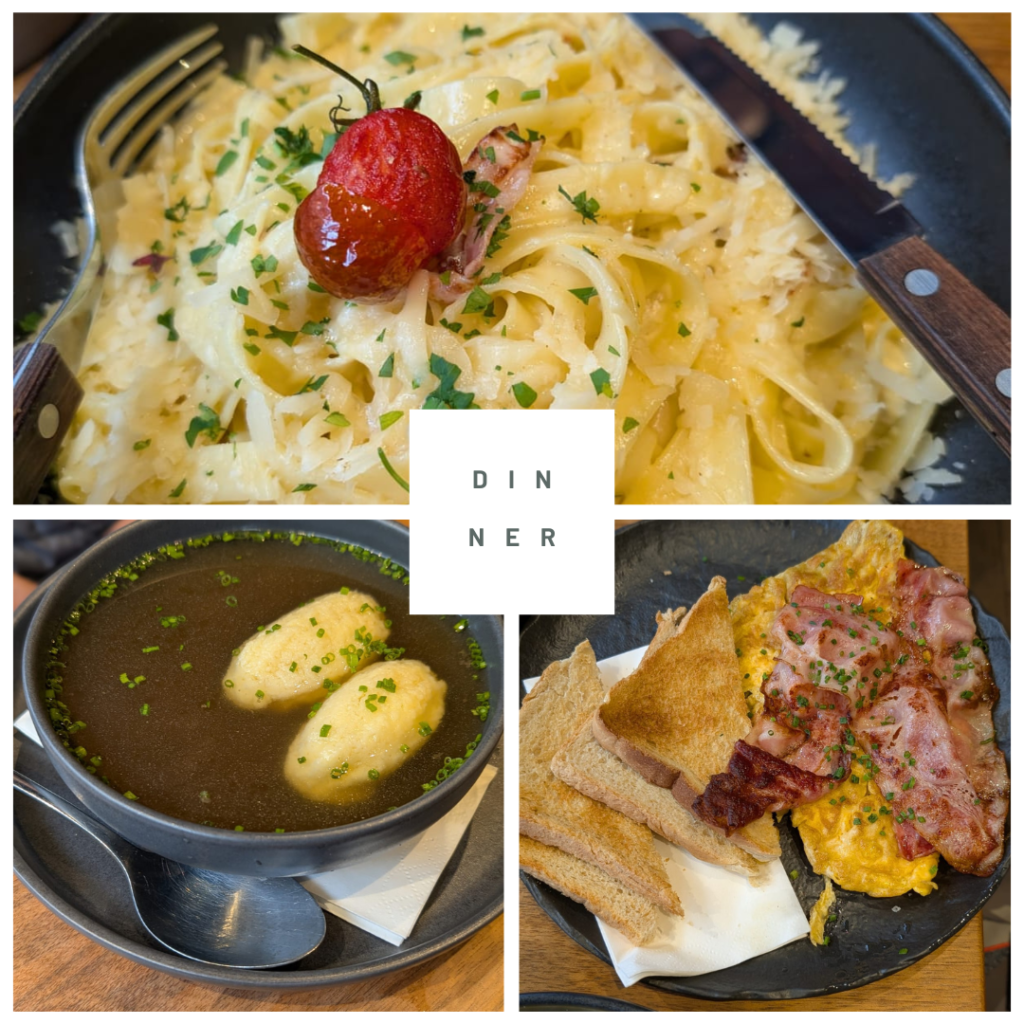
Day 2: A Cultural Feast, Both Literal and Figurative
10:00 AM: Belvedere Palace – A Summer Sojourn
Once the summer residence of Prince Eugene of Savoy, this stunning Baroque palace now houses an impressive art collection, including Gustav Klimt’s famous The Kiss. The palace’s sprawling gardens offer one of Vienna’s most picturesque views.
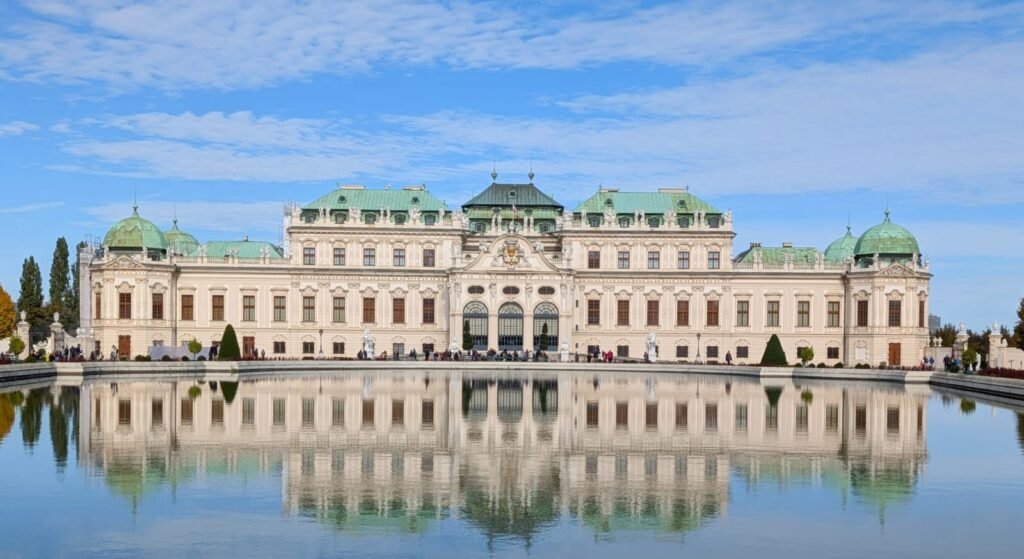
12:00 PM: Karlskirche – A Stunning Baroque Beauty
Walk or take the U-Bahn to Karlskirche. Admire its grand dome for free or head up to the panoramic terrace for €9.50 (kids enter free). Commissioned in 1713 by Emperor Charles VI after a devastating plague, this grand Baroque church was dedicated to St. Charles Borromeo, the patron saint of plague victims. Its striking green dome and massive columns are inspired by ancient Roman architecture.

1:00 PM: Lunch at Naschmarkt
Walk over to Vienna’s most famous market, the Naschmarkt. It dates back to the 16th century when it primarily sold milk bottles. Today, it’s a melting pot of cultures, offering everything from traditional Austrian delicacies to Middle Eastern and Asian flavors. This vibrant market is a foodie paradise. Try Tafelspitz (Austria’s national dish of boiled beef with broth), Wiener Schnitzel, or the beloved Austrian potato salad.
🍽 Budget tip: Stick to the food stalls (€10 per person) rather than sit-down restaurants (€25 per person).
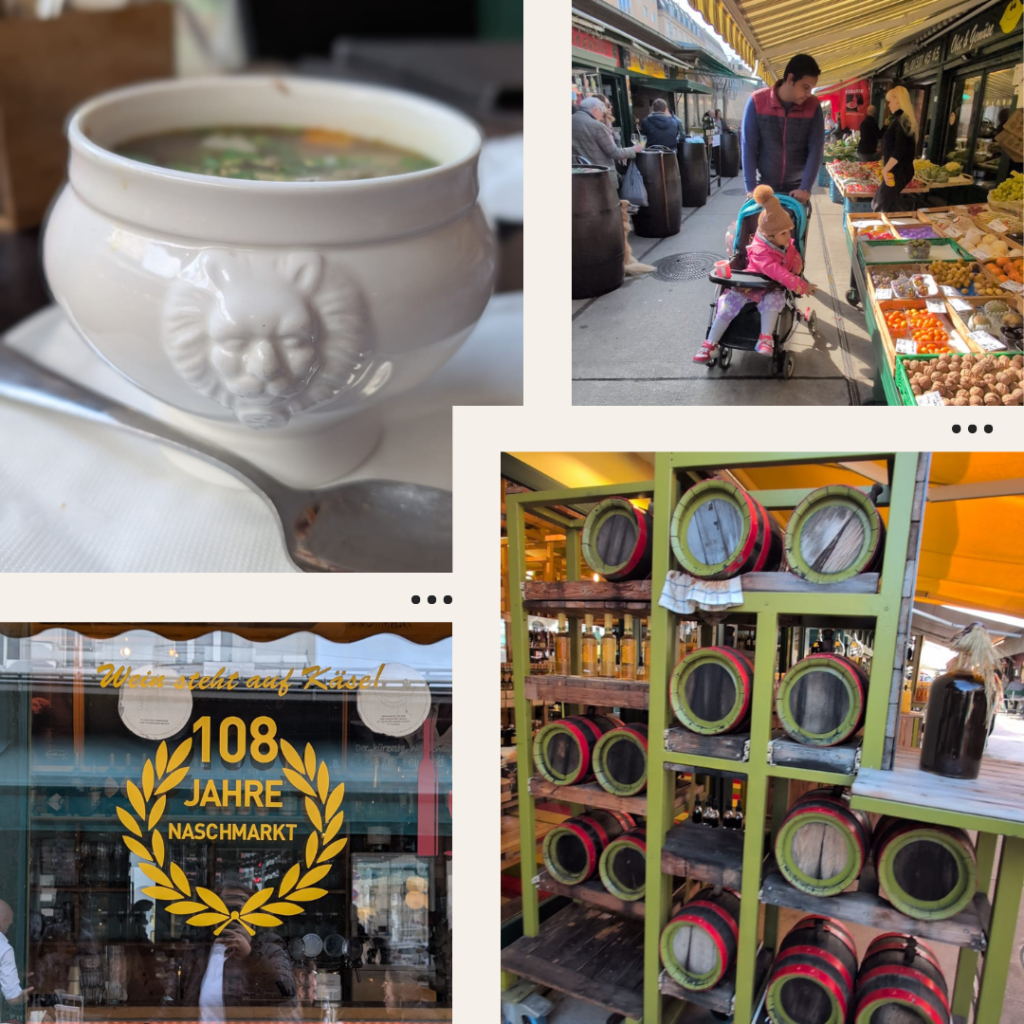
3:30 PM: Schwedenplatz & Graffiti Walls
Cross over to Schwedenplatz and walk along the Donaikanal, where colorful graffiti lines the walls. Named in gratitude to Sweden for providing aid during the Austro-Prussian War, this lively square sits along the Danube Canal. It’s a hub for street food, boat rides, and some of the city’s best views of Vienna’s graffiti art scene. If you’re in the mood for a drink, stop at Badeschiff Wien, a floating bar.

4:00 PM: St. Stephen’s Cathedral
Vienna’s most iconic cathedral is a Gothic masterpiece. This masterpiece has been standing since the 12th century and has witnessed everything from the coronations of emperors to World War II bombings. Its colorful tiled roof and soaring South Tower make it one of the most recognizable landmarks in Austria. Entry is free, but climbing the 343 steps of the South Tower costs €5.50 (worth it for the views!).
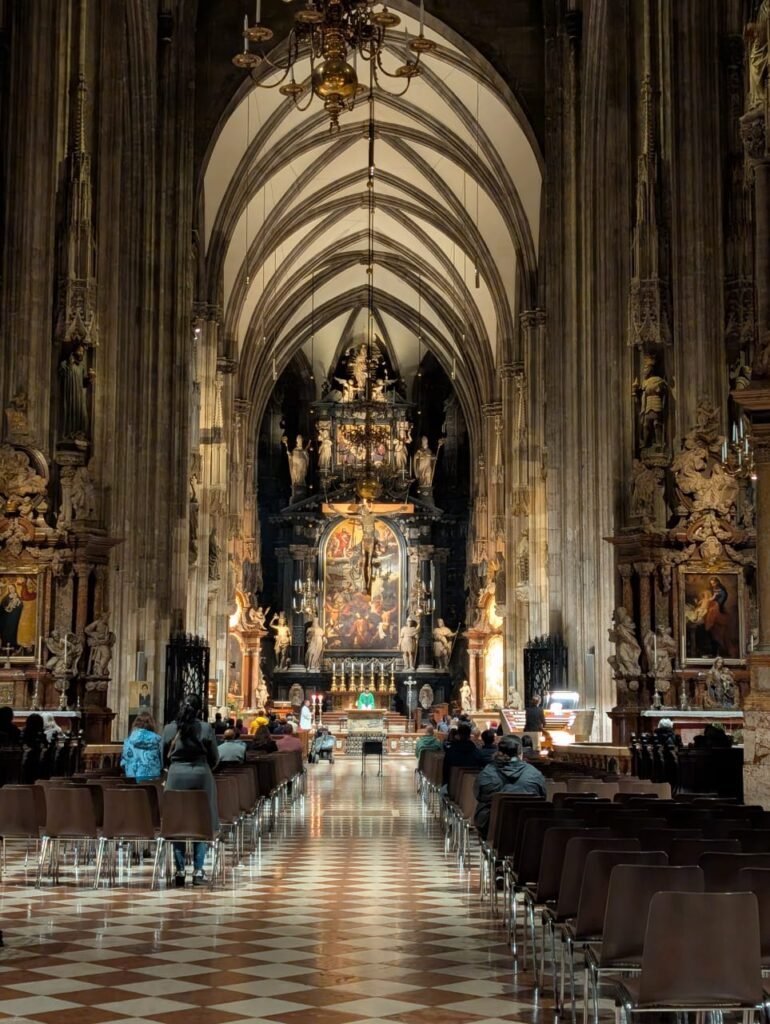
5:00 PM: Shopping in Vienna’s Old Town
While you leisurely walk through the world-famous streets of Old Vienna, marvel at the history, heritage, and everything regal. indulge in some souvenir shopping, or take time for a sugar break! Taste the famous Aperol Spritz or Apfelstrudel at Café Demel, a historic spot with an opulent interior. Apfelstrudel, Austria’s beloved pastry, became famous during the Habsburg Empire and is said to have been influenced by Turkish baklava. Traditional Viennese strudel dough is so thin that, according to legend, one should be able to read a love letter through it!
☕ Luxury option: For an even grander experience, try Café Central, where Freud and Trotsky once sipped their coffee.

6:00 PM: A Stroll Through Vienna’s Most Beautiful Landmarks
- Volksgarten (free!) – Perfect for a golden-hour walk. Originally built as a private garden for the imperial family, this lush park opened to the public in 1823 and is home to over 3,000 rose bushes. It also features a replica of the Temple of Hephaestus in Athens.
- Hofburg Palace – The former imperial residence of the Habsburgs. Once the winter residence of the powerful Habsburg dynasty, this sprawling complex has housed emperors, a legendary equestrian school, and even Sigmund Freud’s favorite café. Today, it serves as the official workplace of Austria’s president.
- Heldenplatz (Hero’s Square) – Ideal for soaking in Vienna’s regal vibes. This grand square was the site of Adolf Hitler’s infamous 1938 annexation speech to cheering crowds. Today, it stands as a reminder of Austria’s complex history, framed by magnificent imperial buildings.
- Mozart’s House – Wolfgang Amadeus Mozart lived here from 1784 to 1787, composing some of his greatest works, including The Marriage of Figaro. It’s the only one of his Vienna residences that still exists, now serving as a museum dedicated to his life and genius.
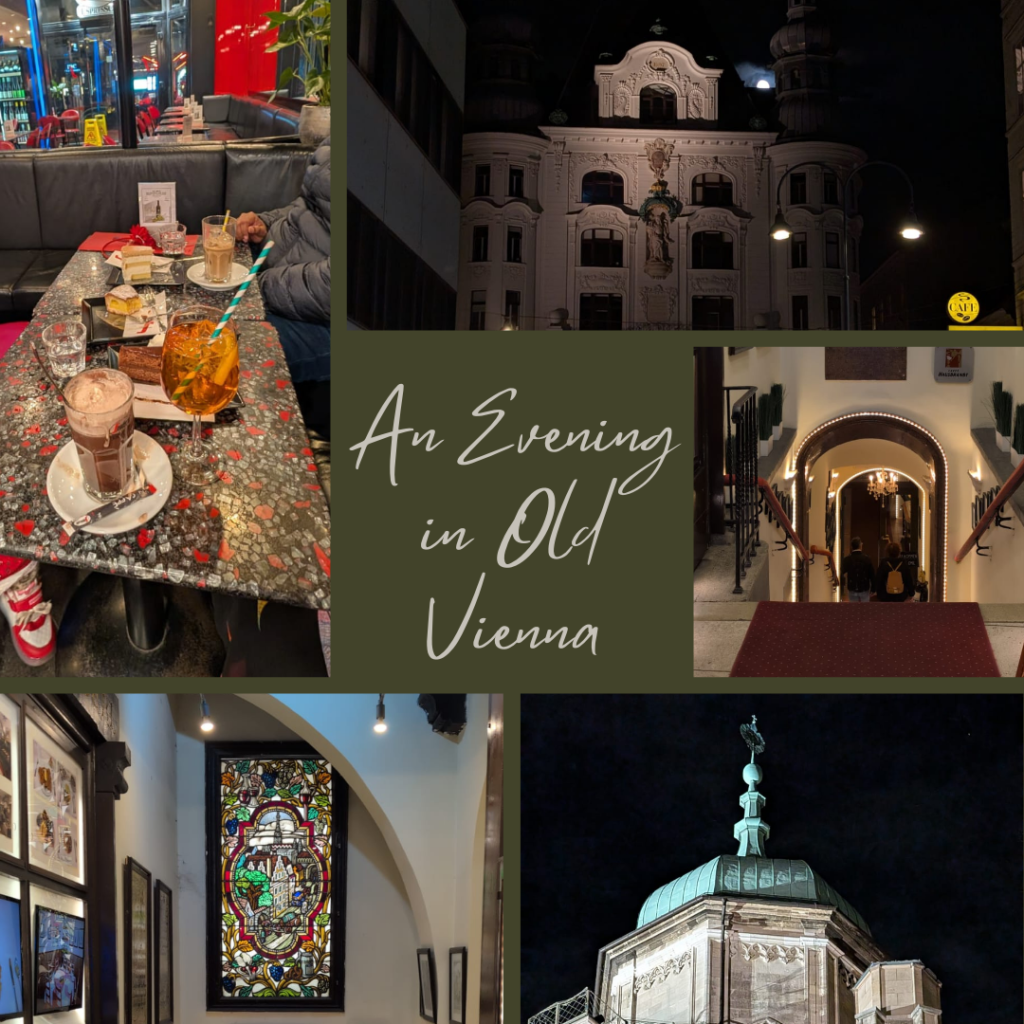
7:00 PM: Dinner at Figlmüller – Home of the Giant Schnitzel
Your last proper meal in Vienna deserves a bang. Figlmüller is legendary for its plate-sized schnitzels. Order the original pork schnitzel (€15-20), or a hearty steak, and pair it with an Austrian beer.

8:30 PM: Classical Concert at St. Peter’s Church
End your Viennese fairytale with a magical live performance at St. Peter’s Church. Modeled after St. Peter’s Basilica in Rome, this Baroque gem is one of Vienna’s oldest churches, dating back to the 4th century. Inside, its stunning frescoed dome and golden altar make it a must-see for lovers of ornate architecture. The candlelit atmosphere is perfect for an evening of Mozart and Vivaldi (€35 for middle seats).
Vienna is often called the “City of Music”, and for good reason—some of the greatest composers in history, including Mozart, Beethoven, Schubert, and Strauss, lived and worked here. Classical concerts in Vienna range from grand performances at the Vienna State Opera and Musikverein to intimate chamber music recitals in opulent Baroque churches like St. Peter’s.
🎶 Budget alternative: Catch free live performances by street musicians around St. Stephen’s Cathedral.
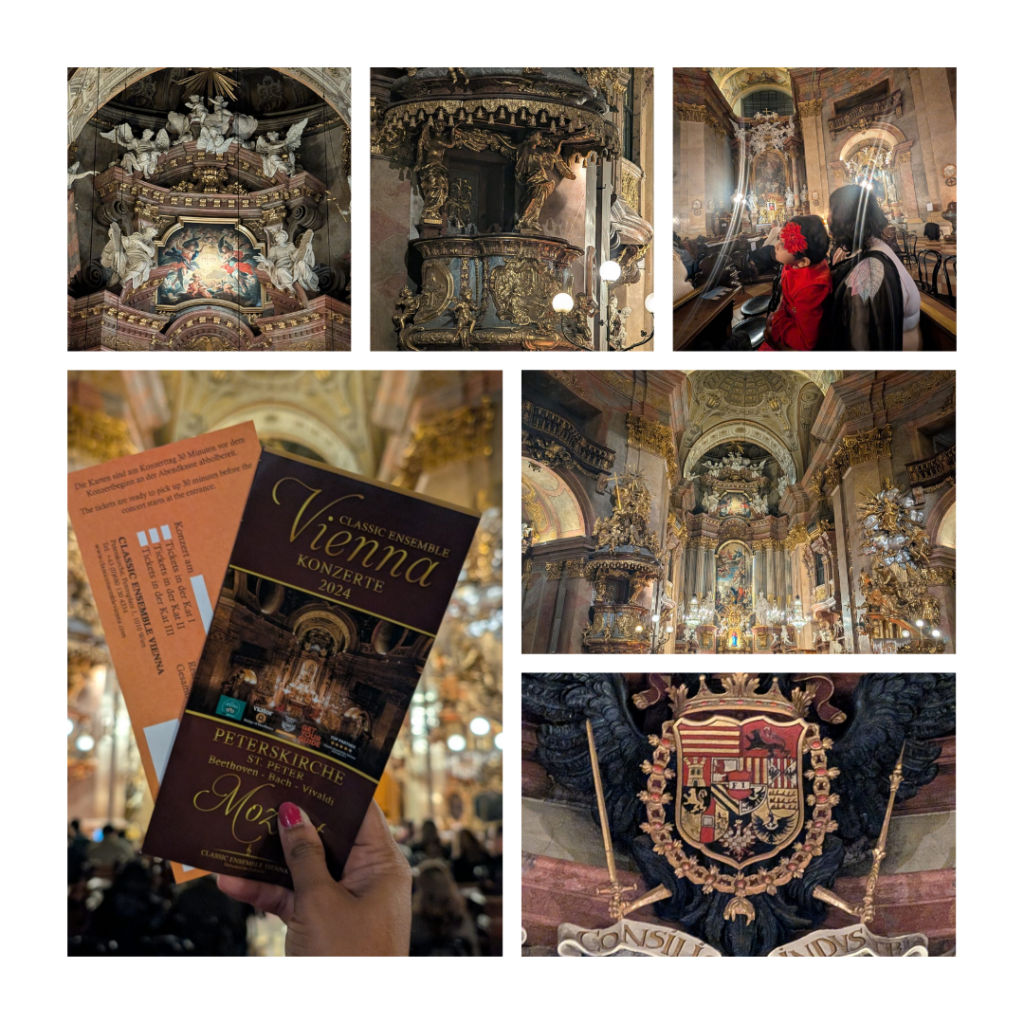
10:00 PM: End Your Trip with a Slice of the Sachertorte
Sachertorte is Vienna’s most famous chocolate cake, created in 1832 by 16-year-old apprentice Franz Sacher for Prince Metternich. The prince had requested a dessert “to impress,” and young Sacher’s rich chocolate cake with a layer of apricot jam did just that! It’s typically served with unsweetened whipped cream, as Viennese tradition dictates that drinking water or coffee alone isn’t enough to balance the rich chocolate flavor.
After this stupendous day dipped in history and memories, hop on the U-Bahn back to your hotel, satisfied and possibly 5 pounds heavier. But hey, that’s what travel is about!

Bonus: Transport Tips & Money-Saving Hacks
- Get the Vienna Travel Card (€8 for 24 hours) – unlimited travel on trams, buses, and metros.
- Use Red Trams for cheap sightseeing. One of the oldest tram networks in the world, Vienna’s tram system dates back to 1865 when horse-drawn trams first hit the streets. Electric trams took over in 1897, making the network one of Europe’s pioneers. Here are some heritage routes and activities to do in them:
- The famous Ring Tram (#1 and #2) runs along the Ringstraße, circling Vienna’s historic center and passing iconic landmarks like the Hofburg Palace, State Opera, and Parliament—a budget-friendly alternative to expensive city tours! They €2.20 per ride, or free with a travel pass.
- You can also board Vienna’s Tram #71 is nicknamed the “Cemetery Express” as it has traditionally transported passengers to the Central Cemetery (Zentralfriedhof), where legends like Beethoven, Schubert, and Brahms are buried.
- You can even rent a historic red tram for private events, turning a sightseeing tour into a rolling Viennese experience with wine, music, and a touch of nostalgia!
- Walking is your best friend! Most major attractions are clustered together in the historic center.

Let’s Wrap Up!
Vienna in two days is a whirlwind, but with this plan, you’ll experience its grand history, mouth-watering food, and fairytale charm. Whether you’re a backpacker stretching euros or a luxury traveler indulging in Michelin stars, Vienna delivers an unforgettable experience. So grab that schnitzel, hop on a tram, and waltz your way through one of Europe’s most elegant cities. Prost! 🍻
Happy Travels!
